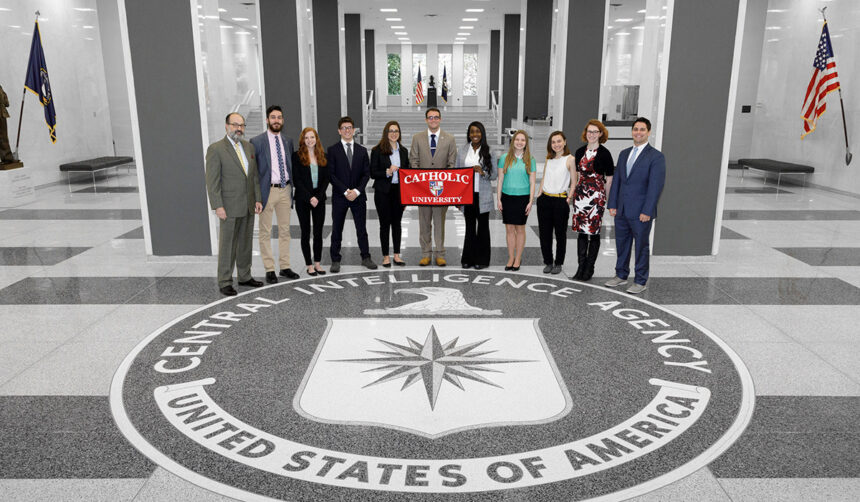Throughout the 20th century, two global institutions—the Catholic Church and the Central Intelligence Agency (CIA)—found themselves operating on parallel missions: both aimed to combat communism, protect Western values, and influence hearts and minds across continents. While the Church’s tools were faith and morality, the CIA’s were intelligence and covert action. Their paths intersected frequently, and though no formal alliance ever existed, the record shows a pattern of mutual benefit and occasional collaboration that blurred the lines between religion and geopolitics.
Origins of the Relationship
The roots of this cooperation trace back to the early years of the Cold War, when the Vatican emerged as one of the few transnational networks capable of rivaling the ideological and territorial reach of the Soviet Union. For Washington, the Catholic Church offered something no spy agency could manufacture—a deep moral legitimacy and a presence in every corner of the world, especially in Europe and Latin America where communist influence was spreading rapidly.
Declassified U.S. documents and studies such as those archived by the National Security Archive at George Washington University reveal that the CIA viewed religious institutions as critical partners in the psychological and cultural battle against communism. Catholic networks, particularly in Italy, Poland, and Latin America, were perceived as key channels through which pro-Western messages could be spread and resistance movements organized.
Italy: Protecting the Christian West
The earliest and most documented case of CIA–Catholic cooperation occurred in post-war Italy. The Vatican under Pope Pius XII, fearing a communist takeover, quietly supported the Christian Democratic Party. Meanwhile, the CIA funneled millions of dollars into the same cause through front organizations, Catholic trade unions, and cultural programs.
Though the Vatican did not officially endorse CIA operations, their interests aligned. Both institutions feared that a communist victory in Italy—the spiritual heart of Catholicism—would devastate Western moral and political stability. The 1948 Italian election became a decisive moment: propaganda from Catholic pulpits, coordinated with U.S. covert funding, helped secure a Christian Democratic victory, preserving Italy’s alignment with the West.
Cuba: Religion Against Revolution
In Latin America, the story became more complex. Following the 1959 Cuban Revolution, CIA operatives reportedly sought to use religious networks to undermine Fidel Castro’s growing influence. Declassified reports indicate that the agency distributed tens of thousands of anti-Castro pamphlets through Catholic channels and sought cooperation from local clergy to mobilize protests disguised as religious gatherings.
While the Vatican never sanctioned these activities, they show how U.S. intelligence viewed Catholic institutions as both moral cover and logistical infrastructure. Cuba, heavily Catholic before 1959, was seen as fertile ground for faith-based resistance. Yet the attempt largely failed—Castro’s government clamped down, and many priests were expelled or imprisoned.
Latin America: A Divided Church
By the 1970s, the Vatican and the CIA found themselves at odds over Latin America’s liberation theology, a movement among priests and lay Catholics that emphasized social justice and sided with the poor. The CIA, viewing it as a Marxist infiltration of the Church, funded anti-communist factions within religious orders and supported right-wing regimes that persecuted liberation clergy.
This created one of the most morally ambiguous chapters in Cold War history: U.S.-backed regimes in El Salvador, Guatemala, and Chile targeted priests and nuns advocating for human rights. Yet at the same time, Catholic leaders like Archbishop Óscar Romero, later canonized as a saint, condemned these abuses—demonstrating that the Church itself was internally divided between faith as liberation and faith as control.
Poland: The Vatican’s Counteroffensive
Perhaps the most famous convergence of faith and intelligence occurred in Poland during the 1980s. The rise of Pope John Paul II, the first Polish pontiff, transformed the Vatican into a center of moral opposition to Soviet rule. The CIA reportedly provided financial and logistical support to the Polish trade union Solidarity, a movement closely aligned with the Catholic Church that helped destabilize communist control in Eastern Europe.
While both the CIA and the Vatican pursued separate channels, their objectives overlapped—weakening Moscow’s grip on the region. Scholars argue that without the combined moral force of John Paul II and covert Western support, the collapse of communism in Eastern Europe might have taken far longer.
A Complex Legacy
The relationship between the CIA and the Catholic Church was never formalized, but it embodied the intersection of ideology and power that defined much of the 20th century. At times, it appeared mutually beneficial—the Church gained protection and global influence; the CIA gained legitimacy and access to local populations. At other times, it bordered on manipulation, with the U.S. exploiting faith networks to achieve political ends that often contradicted the Church’s spiritual mission.
By the 1990s, the world had changed. The Cold War was over, the Vatican had distanced itself from overt political alliances, and the CIA had shifted focus to new global threats. Yet the historical shadow remains. From Italy to Poland to Cuba, the use of religion as an instrument of statecraft left a legacy of suspicion—especially in the Global South, where churches were sometimes seen as tools of Western intervention rather than purely spiritual institutions.
The story of the CIA and the Catholic Church is not one of conspiracy, but of convergence—two powerful institutions navigating the same ideological battlefield by different means. The Church sought to defend souls; the CIA sought to defend systems. Their cooperation helped shape key turning points of the modern world, but it also blurred the boundary between divine mission and political ambition.
Today, as global politics once again invokes faith in struggles over identity, democracy, and power, the lessons of that uneasy alliance remain vital: whenever faith becomes a weapon, both morality and truth risk becoming collateral damage.


